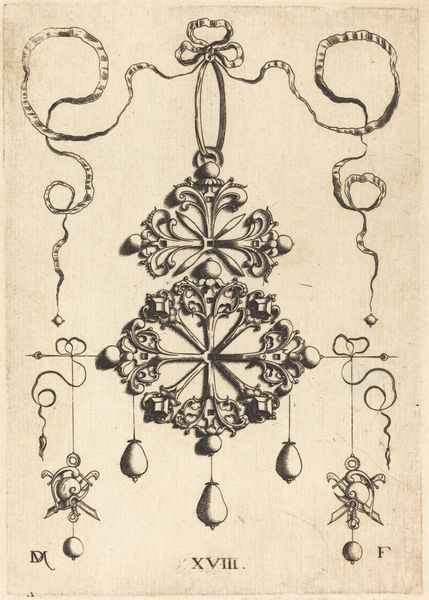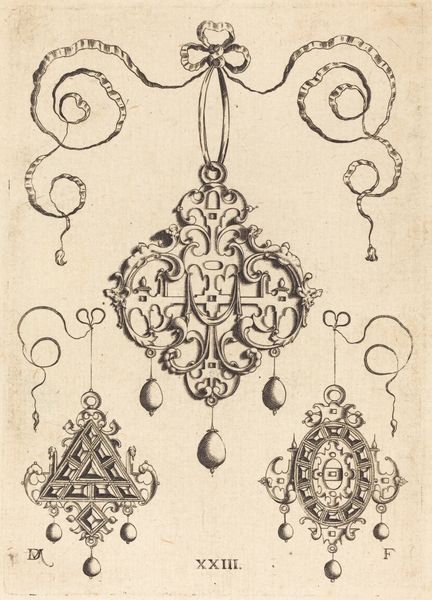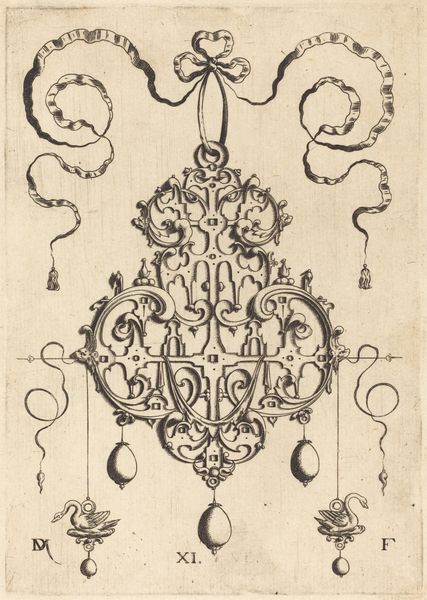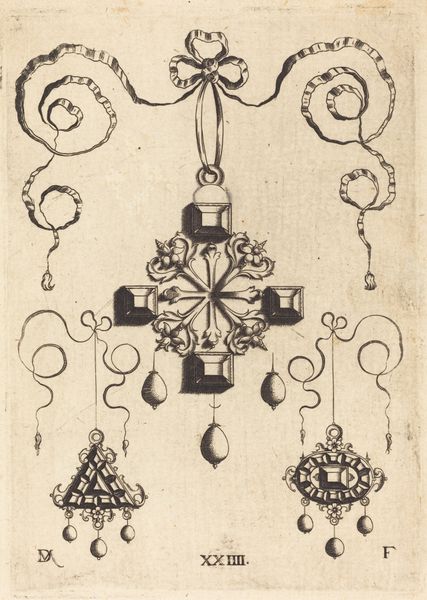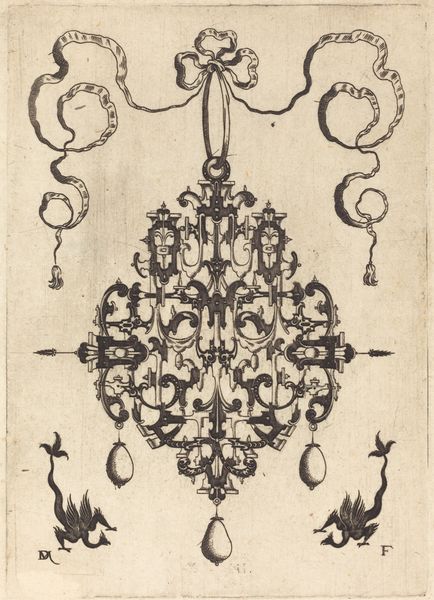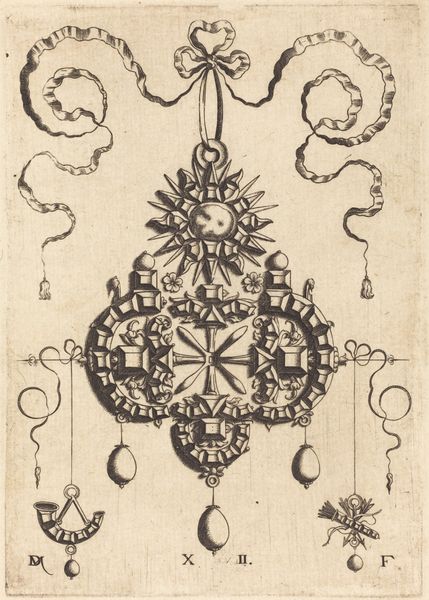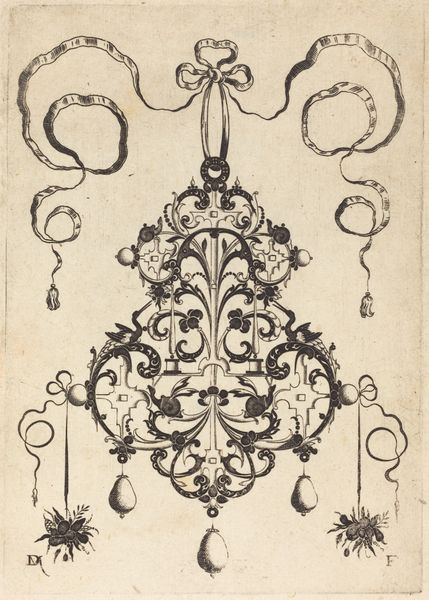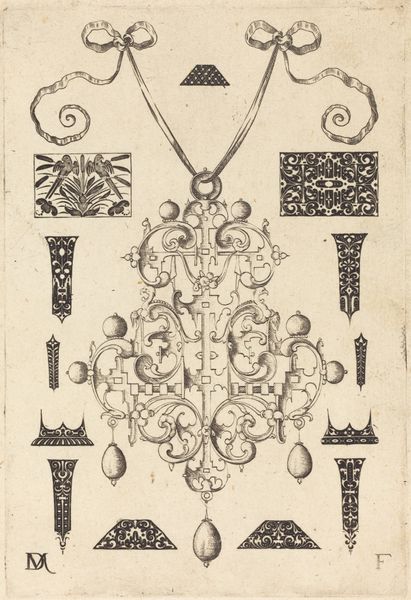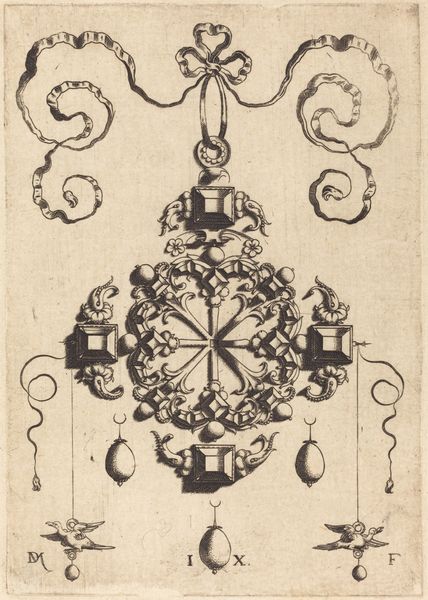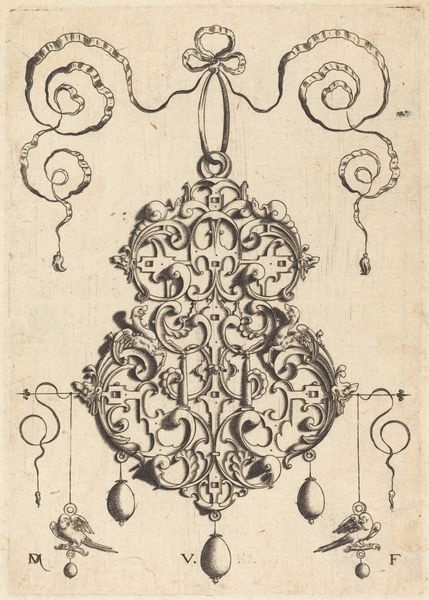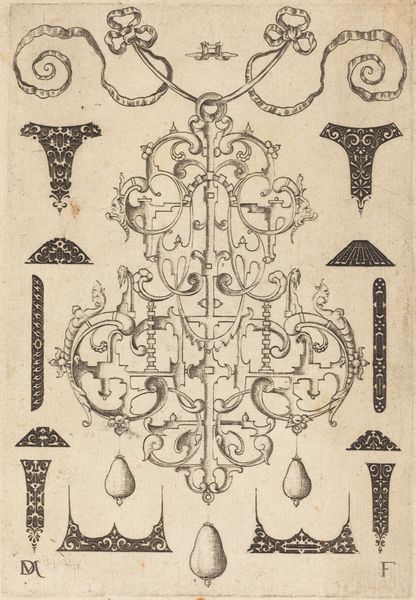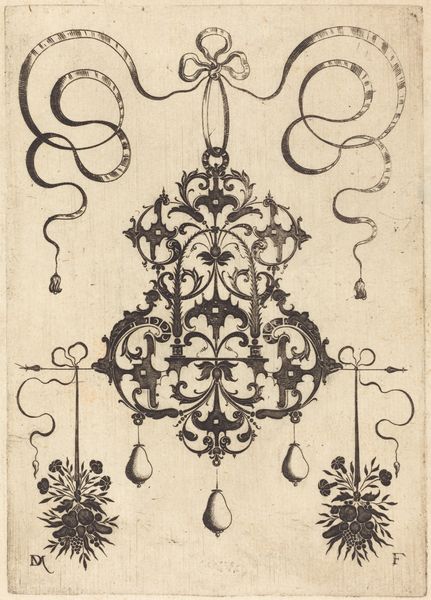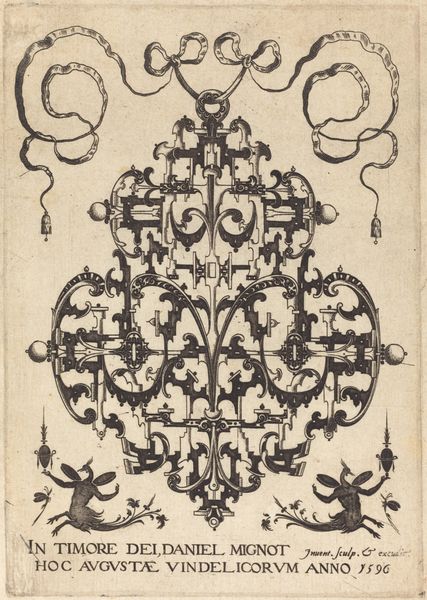
Pendant with Two Double Crosses, Surrounded by Four Diamond-Shaped Stones, Five Table-Stones, and Thirteen Pearls
0:00
0:00
graphic-art, print, engraving
#
graphic-art
# print
#
11_renaissance
#
line
#
history-painting
#
engraving
Copyright: National Gallery of Art: CC0 1.0
Curator: Standing before us is a "Pendant with Two Double Crosses, Surrounded by Four Diamond-Shaped Stones, Five Table-Stones, and Thirteen Pearls." The graphic art print, a work in engraving by Daniel Mignot, evokes the spirit of the Renaissance. Editor: My first thought is… intricate. Look at that detail! It's all so painstakingly rendered; you can almost feel the weight of those imagined gems and the cool smoothness of the pearls. What statement do you think a pendant like that makes? Curator: I'm immediately struck by the implications of status and power intertwined with expressions of faith. The symbolism of crosses, of course, points to Christianity. However, consider how access to such precious materials – the stones, the pearls – would have been sharply demarcated along lines of wealth and class. It’s interesting that jewelry design served both a spiritual function and was an ostentatious display of wealth. Editor: I totally see that tension. It makes me think about who would even wear something like this, right? Like, imagine them: dripping in jewels, head held high, oblivious to the realities of most people. It feels like wearing a whole power dynamic around your neck, and it’s kind of intimidating. But also, artistically speaking, the line work in this engraving is exquisite! How did they even DO that back then? Curator: Consider also how prints like this would function within early modern society. They would have been relatively easily reproducible and shareable. Engravings after the pendants and other jewelry might have functioned as both pattern books for goldsmiths as well as a form of social display, allowing even those who could not afford such extravagant pieces to contemplate their luxury. This piece invites a whole intersectional discourse involving race, gender, and class. Editor: Whoa. So it's like…the ancient equivalent of window shopping. Except way more exclusive and loaded with meaning. It really does make you think, doesn't it? Almost makes you want to grab a sketchpad. Curator: It invites us to consider that material culture isn't simply about objects themselves but their relationship with identity, desire, and the wider power dynamics of their age. Editor: I'm still stuck on that ribbon at the top, like a celebration for the rich folks back then... I suppose it’s a tiny little peek into history that feels very big when we stop to look.
Comments
No comments
Be the first to comment and join the conversation on the ultimate creative platform.
